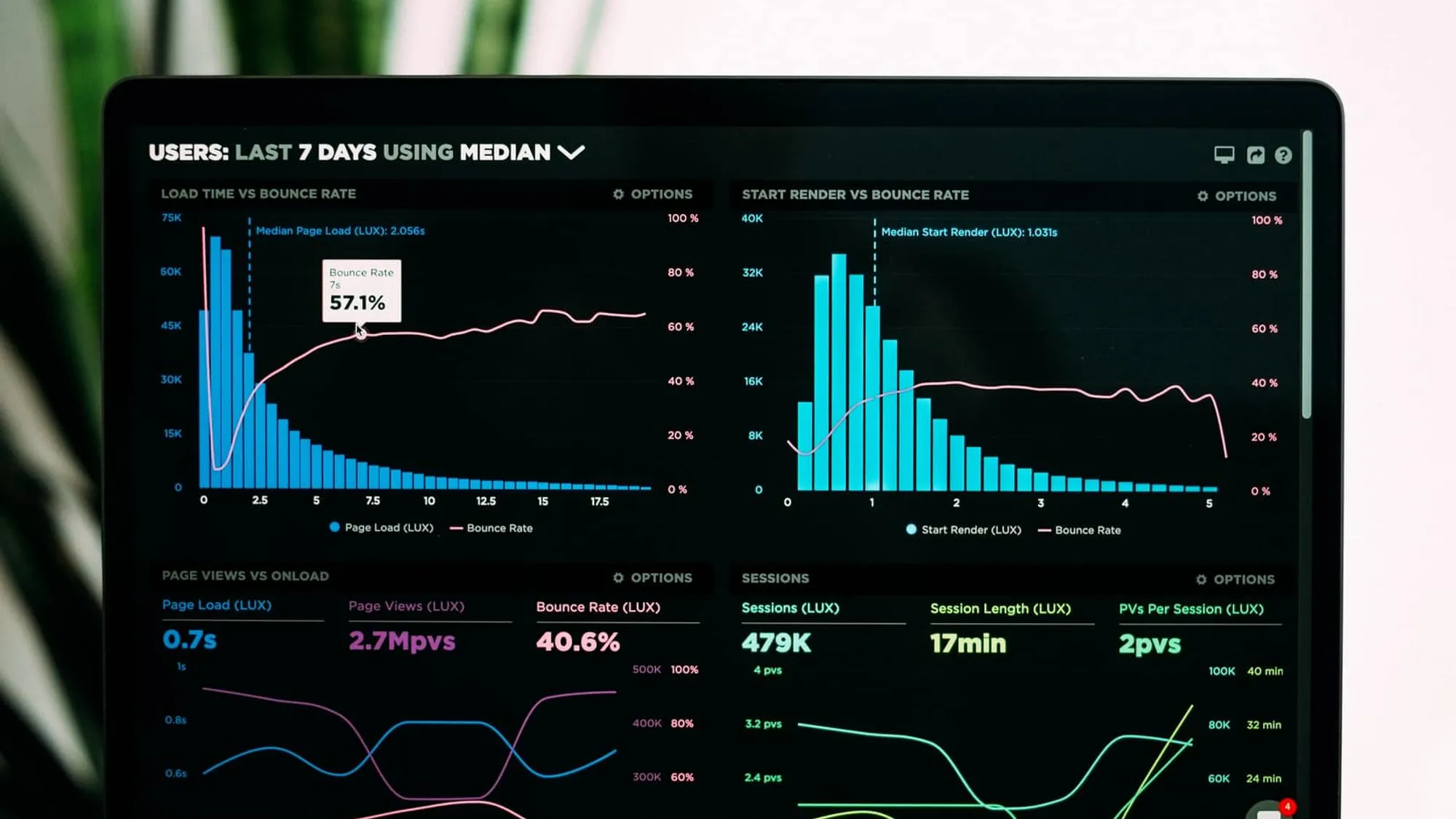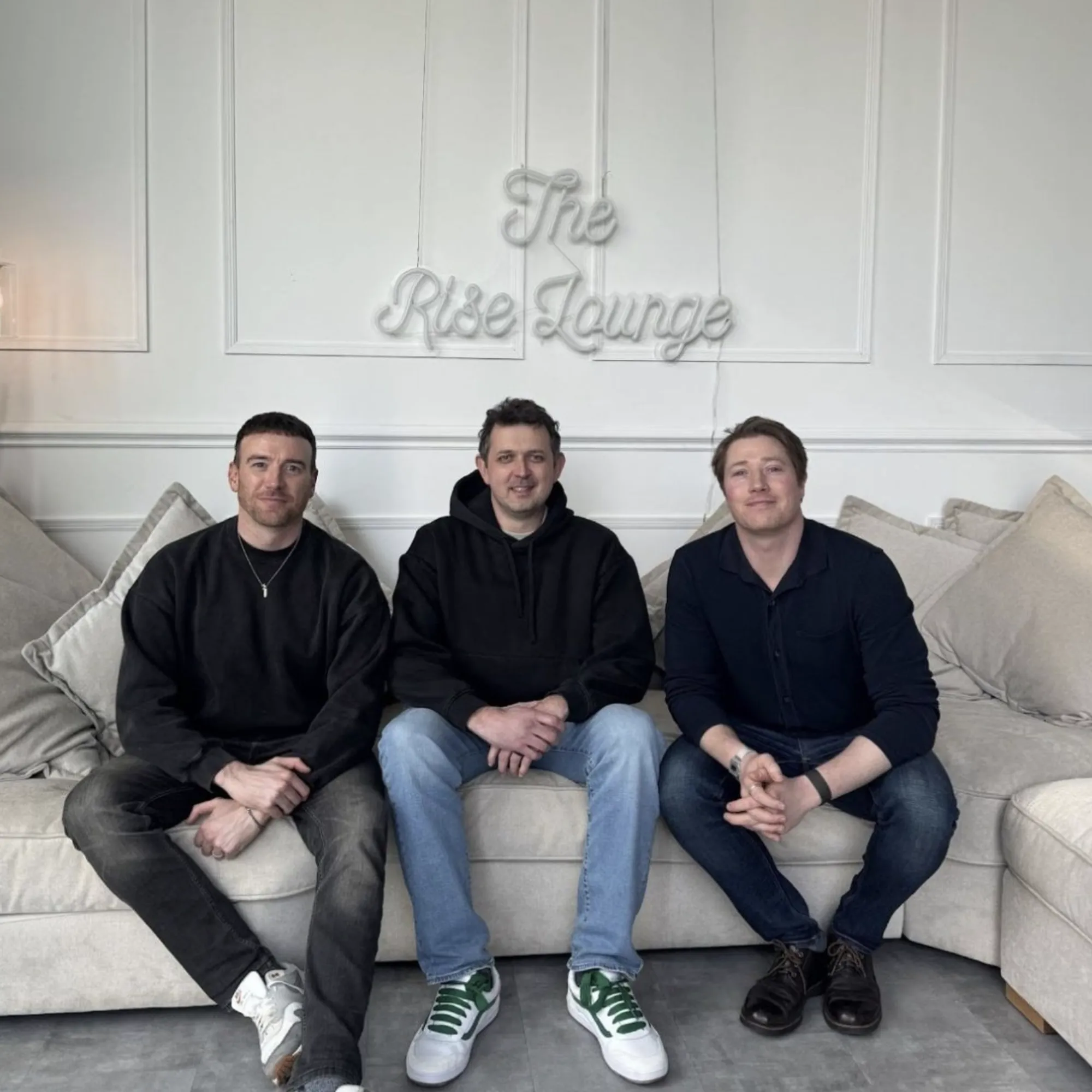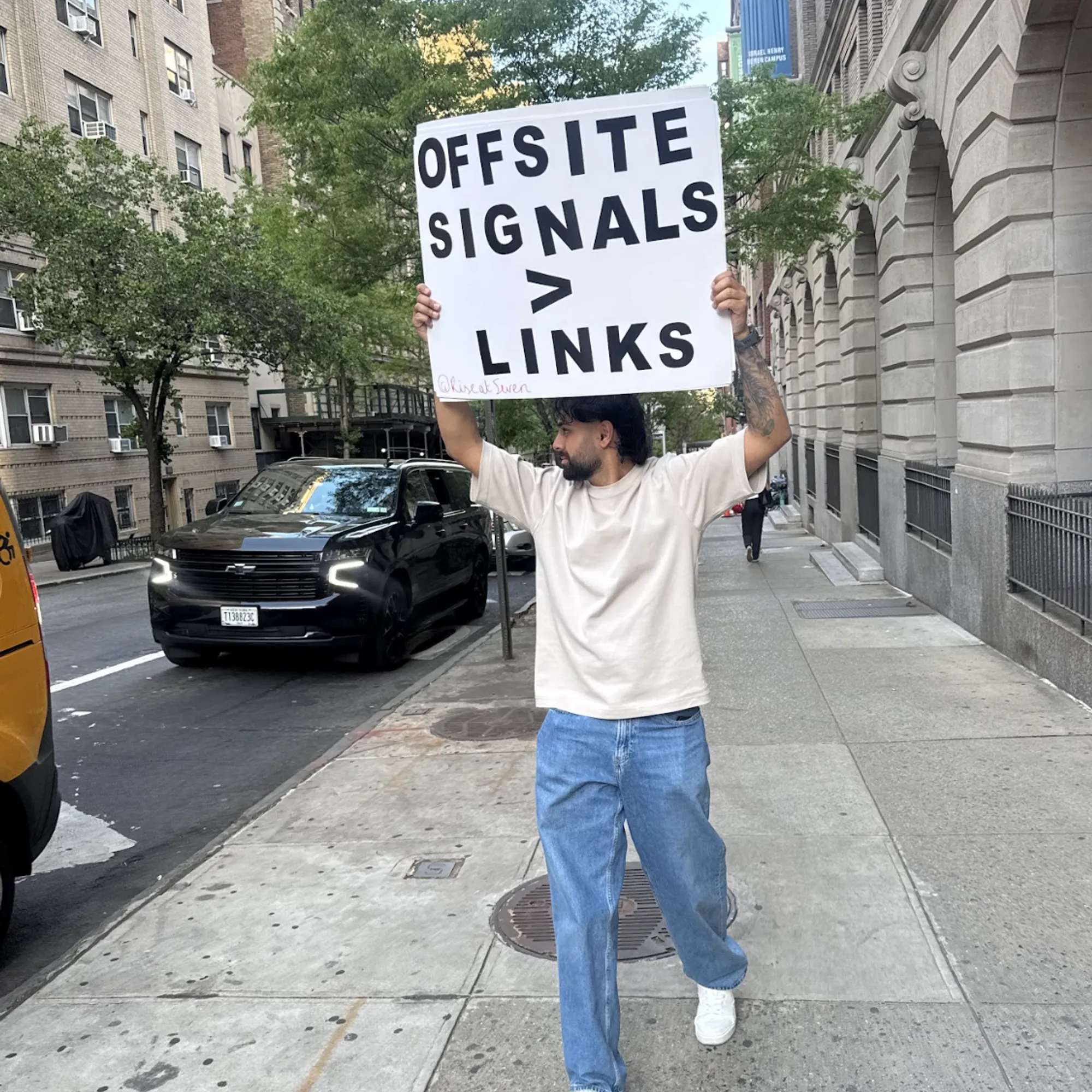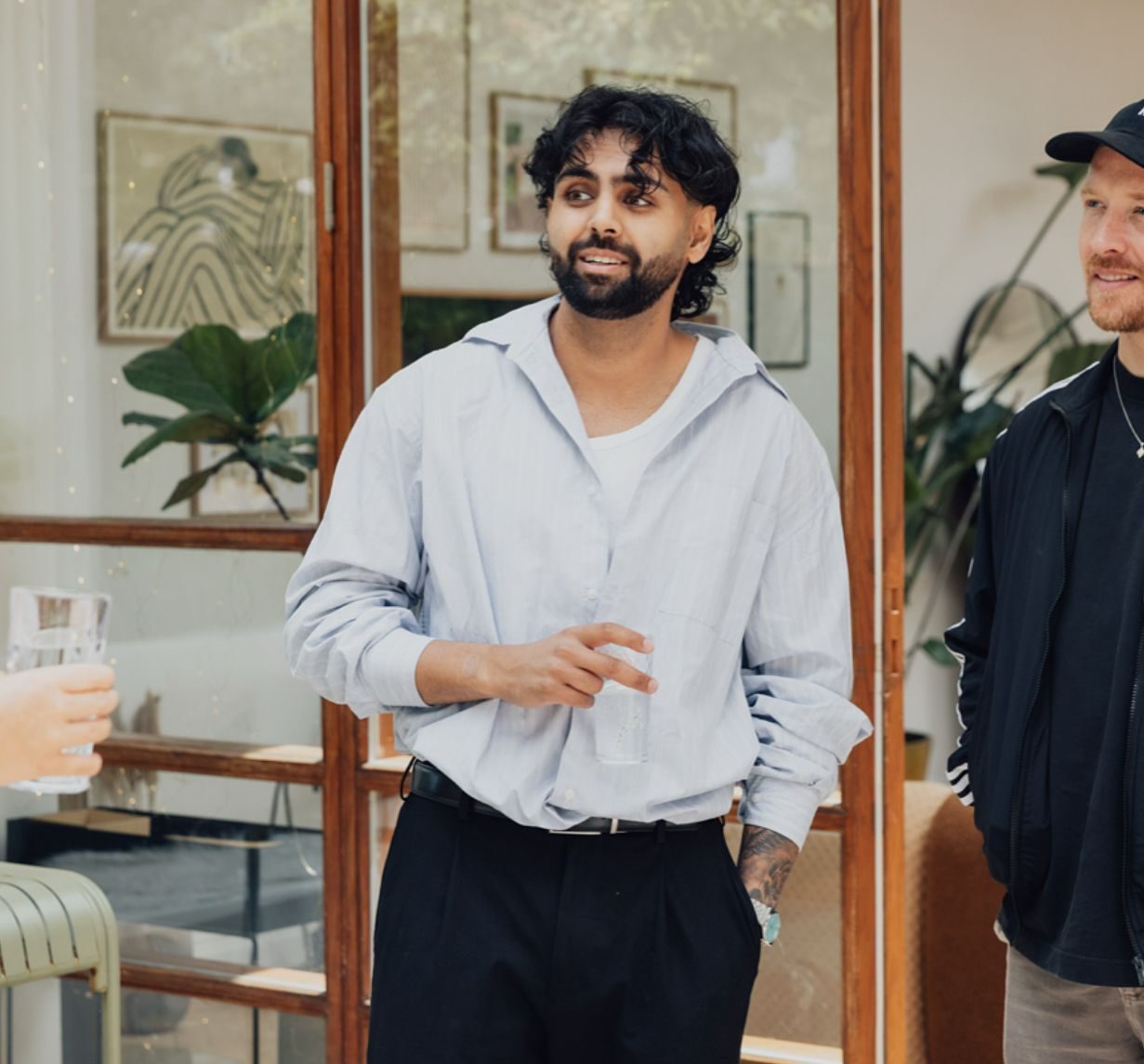
Why Digital PR is MORE than just links - and the metrics we track at Rise

Graphs that go up - that's what we all want right?
Well, high-quality links do that. But what else do links do for a site or brand and what other metrics can you track to prove the value of your activity?
Let me start this post by saying I am an SEO! Digital PR is often debated in the space of search - which came first digital PR or SEO? For me, its SEO.
Absolutely EVERYTHING I do has search at the heart of it, and as a content marketer; I apply my knowledge of creating bloody awesome stories to landing links competitors can only dream of! How?
Because, the links I like to build drive more than a boost in rankings. They drive direct traffic, conversions, engagement, AND build brand - whilst also passing that value that our clients need in order to compete in the organic space.
There are two main ways in which you’ll drive value/ROI from a link:
- Direct – from someone clicking on the link and then converting/making a purchase
- Indirect – the link helps your overall SEO campaign which in turn increases your rankings and visibility brings you more traffic which will then convert/make a purchase
No, I'm not talking about fluffy traditional metrics like AVE which no-one can actually measure. I'm talking about metrics that my client contacts boss actually cares about. Metrics that catches the attention of the CEO. Metrics that make me and my business more money!
Organic rankings
Organic rankings are an indirect metric typically hard to impact because links aren’t the only thing that will determine the success of an SEO campaign. We could drive the most amazing links in the world, but if the client’s site is being held back by technical/content/other issues that we don’t have control of, then we still won’t see the benefit (or at least not as much of it). Some also expect a link to go live and Google to reward a site near immediately for this. This isn't the case. On average it takes around 3 months for a site to really benefit from such activity however I have seen it much faster (sometimes a month or a few weeks) ever since algorithm's updated live.
When we have a site in a strong position and we know that the end goal is to get links, then we can easily map the value of the link campaign. For example, this is one of the strongest impacts of a campaign I worked on in 2017 where you can see the difference in visibility from when we launched our campaign, as indicated by the line on the graph, and the performance since.
The added value of links - direct
Let's start with an example...
I have been working with a global client for the last 7 months where we have built 198 media placements, Of those, 183 included a link back to their site. That's a high link ratio to media coverage!
Of those links, the average DA is 71 (crazy I know). But the sexiest part is this...
Referrals
These links have driven 181,000 direct referrals. That's right! 181,000 people have clicked on a link we have built on a national news article and visited the site. No paid activity. Not including search traffic. I'm talking about direct referrals. All for free.
Social engagement and shares
The pieces of content we have landed on have received 108,900 social shares in total, driving noise on Facebook and Twitter. This noise has then led to a further 600,000+ heading to the site as part of the buzz.
Conversions
...AND drove direct conversions valuing around £120K. This doesn't take into consideration indirect referrals, brand awareness, ranking improvements. This is just activity that's come from direct links being built.
Search demand
Oh, and to put the cherry on the top... This activity has doubled the search volume of a keyword we are trying to rank for. We've created a demand for our products that much, that more people are searching for it.
So the next time someone says Digital PR isn't a real SEO tactic. Tell them to do one. The next time someone questions the "cost per link" - show them what ELSE you get.
I make it sound easy. It's not. For us, getting the links is the easy bit. Getting links that people actually click on, drive conversions, drive engagement, and brand - is the hard part. But its what makes us stand out.
It's why we need to put an end to a cost per link value.
I admit. I used to roll my eyes at these sounds too. "Here they go again. Fluffy PR's bringing fluffy brand stuff to an industry that is all about the direct impact". But as I've realised the true impact of digital PR - I changed my mindset of what metrics are important and you should too! Here's why...
The PR metrics we do (and don't) care about...
How many people saw that infographic you created and landed a link from in 2012? How many people clicked on the link you bought on that spammy blog back in 2005? How many people have heard about that brand?
Old school link building was about one thing and one thing only - link juice! Yes, I said it. All we cared about was getting a link from a site with a DA 30+ with an anchor text link for the keyword we are trying to rank for. So much that we just paid for it. It worked! That's where I started, in fact, I did it too.
But fast forward to 2020, and we have this newfound strategy of Digital PR, Tech SEOs hate to admit how good it is and how it is a strong part of a search strategy as they just think its that fluffy PR thing that people like to call link building. Well, that's bull****! Because what we can do with links and how we value them and track the performance of them has come a LONG way since then! For most of us anyway.
For us at Rise, we waved goodbye to those strategies in 2013 not long after Penguin came in and ruined a lot of people's lives. Now we use the storytelling, content marketing approach to landing links because we don't just get link value now we get a whole lot more!
Still, to this day there are disputes about what is a valuable link! SEO's debating DA, DR, Trust flow, and more. Even some saying links are dead! (Crazy). I'm not saying we ignore these metrics and we absolutely don't. But how do we know which sites to target?
Well here's the answer...
Using data to form a seeding list
At Rise - we've built literally thousands of links for around 45 clients (so far). ALL through storytelling and brilliant content marketing. Not one paid for! These thousands of links provide one thing that we all often ignore - data!
We have a live dashboard showing everything link we have built, the DA of the site, how many people click on the links, buy a product, and engage via social. We combine around 5 tools to allow us to do this but the data is insane! It means I know exactly which links drove the most value for my client and which links my client's boss is actually going to care about. And it looks a little like this... (just a screenshot of one of the dashboards)
Which publications drive the most traffic?
For this site and industry, in particular (as an example), these publications have driven the most traffic, engagement, and sales. As you can see, TYLA leads the way for probably being the most valuable publication to making my client money! Its the publication the CEO loves the most because it drove over 6,000 referrals alone, 115 conversions, and 80K social shares. Yahoo and Cosmo, however, are more appealing to the SEO manager with their high DA's. And TYLA, the Manc and Student problems caught the attention of the social media manager, for the most social shares.
So what is this telling me?
I have data that everyone in that business wants to know about. That feeds into a wider strategy. So much that - this brand's marketing strategy is now heavily driven by search. This is becoming a common theme where SEO's are leading digital strategy and taking budgets from traditional marketing teams. Even more so since Covid19 in fact.
The SEO contact within the business is constantly trying to make her or himself look good, and we as an agency are hired to help them do that. They have their boss to please but also their bosses boss, and their bosses boss too. Search is much bigger than technical SEO now and link building isn't what it used to be. There's much more than that to track and value!
Going to my first sentence in this blog post. Don't for one moment think links are the least priority here. Oh, that's absolutely not the case. As I said, if you have an awesome strategy and awesome content - links are a given. They're the easy part. Everything else is what takes you from a link building agency to much more.
However, striving for traffic and conversions in every link should not be the goal. In fact, it's unrealistic. I once built a link on Forbes that drove 3 clicks. What does that tell you? You don't always need a huge influx of links, loads of traffic and engagement to move the needle. In fact, we recently got ranking position #1 for a 20,000 searches per month keyword with just 4 links! That's right. There's a well thought out strategy behind this fun and once you nail it, you're on to something!
Every site and industry is different so to get this level of insight and data means building links across nearly every publication. We know which sites drive the most traffic through links in finance, automotive, fashion, lifestyle, and more which helps us carefully select our seeding list moving forward.
This doesn't mean we don't try new sites. We do! In fact, we built a link this week on a new site that drove 800 visits in a day! A low DA too.
The point of this blog post is to encourage you to think bigger than DA. Think bigger with your link strategy. And do something that your client contact is going to brag about when they go home.
Obviously, if you are looking for this level of Digital PR strategy - do the right thing and get in touch. Otherwise feel inspired and get the data team to really dig into what they can track and report on and add wider value to your strategy.
Another interesting blog post you might like is how to use your internal search data to inform your digital PR activity!

CEO & Founder of Rise at Seven, and my job is to be out in the market and see which way the wind is blowing in the next 1, 2, 5 or 10 years time and bring that home to my team and clients. I lead the vision of the agency across the UK & US.














